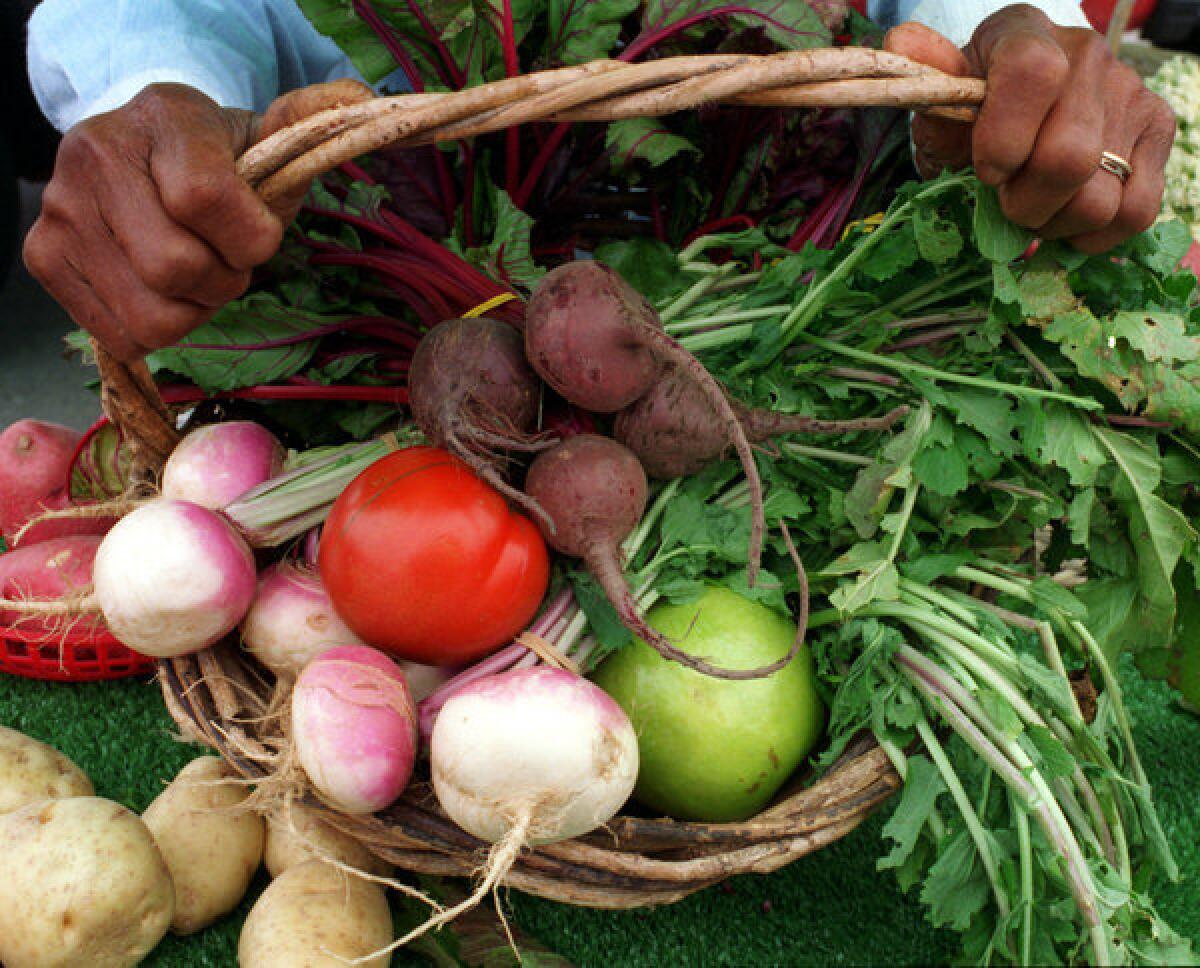$35 for a chicken? Welcome to the 100-mile L.A. diet

- Share via
After a dinner of pasta from Italy sauced with artichokes that had been grown here, then shipped to the East Coast for canning before being shipped back, and a salad with fennel from Mexico and lettuce from goodness-knows-where, my family and I sat down at our kitchen table to argue over a shopping list.
We have agreed to purchase only local foods for the month of June, but were having second thoughts after I discovered the cost of a locally raised, pastured chicken — a steep $35. I guess we won’t be eating much meat.
For the entire month we will only be buying food that has never left a 100-mile radius of my home in West L.A., with the exceptions of wine, coffee and tea. This mandate means almost no processed food, no industrially grown food, no going out to eat, and (as seen above) will probably be more expensive.
RECIPES: 15 easy dinners -- pasta, enchiladas, shrimp skewers, more
We’ll still be able to enjoy flavorful produce, eggs and meat, but grains and some dairy products will be harder to find. I will be documenting my successes, as well as my tribulations, in a weekly blog post. These posts are not intended to be a guide for locavores, but rather an informal account of one family’s attempt to eat locally without going crazy, hungry or both.
Unlike most diets, this is not for my health, but for global health. Although the carbon footprint actually may be bigger for locavores (their shipping methods frequently are less efficient even though the food is traveling a shorter distance), they claim to foster a more sustainable environment while supporting smaller farms and the local economy. Small farmers are more likely to use ecological practices and the farms usually are polycultures, and therefore are more pest-resistant; a monoculture can be wiped out by a single pest, so farms growing more varieties are inherently buffered from outright disaster.
And I believe that local food can taste better. In order to be shipped long distances, industrial produce is bred not for taste but to sustain travel, and is picked long before it is ripe, damaging flavor and lessening its nutritional content.
Although I intellectually recognize the importance of eating locally, I have never attempted to do so. It always seemed to be cost-prohibitive, time-consuming, and to require extensive food knowledge. I am now putting these barriers to the test.
My new mantra is “Barbara Kingsolver did it for a year, I can do it for a month.” Wish me luck, Barbara.
ALSO:
The 11 most useless kitchen gadgets
Six places to enjoy great beer in Pasadena
Guide to late-night Hong Kong cafes in the SGV
More to Read
Eat your way across L.A.
Get our weekly Tasting Notes newsletter for reviews, news and more.
You may occasionally receive promotional content from the Los Angeles Times.








